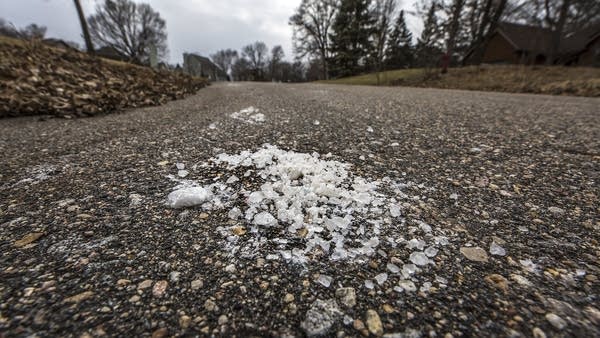MnDOT cuts back road salt use to save money, protect water

Rock salt used to make Minnesota roads safer during winter months often ends up in lakes and streams causing other problems.
Paul Middlestaedt for MPR News
Go Deeper.
Create an account or log in to save stories.
Like this?
Thanks for liking this story! We have added it to a list of your favorite stories.


